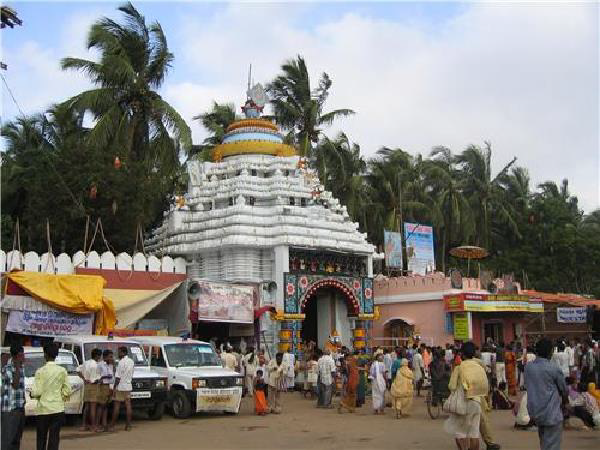
- Jagannath Temple, Puri
- Jagannath Temple - Home
- Jagannath Temple - Overview
- Jagannath Temple - History
- Jagannath Temple - Architecture
- Jagannath Temple - Festivals
- Jagannath Temple - How to Reach?
- Jagannath Temple - Nearby Places
- Jagannath Temple Useful Resources
- Jagannath Temple - Quick Guide
- Jagannath Temple - Useful Resources
- Jagannath Temple - Discussion
Jagannath Temple - Quick Guide
Jagannath Temple - Overview
Jagannath Temple was built in the city of Puri by King Chodaganhadeva in 12th century. He also built the Sun temple of Konark. His grandson Ananga Bhimadeva completed the construction of the temple in 12th century. There are three main deities in the temple who are put into the temple cars during the festival of Rath Yatra and these deities are Lord Jagannath, Balabhadra, and Subhadra.
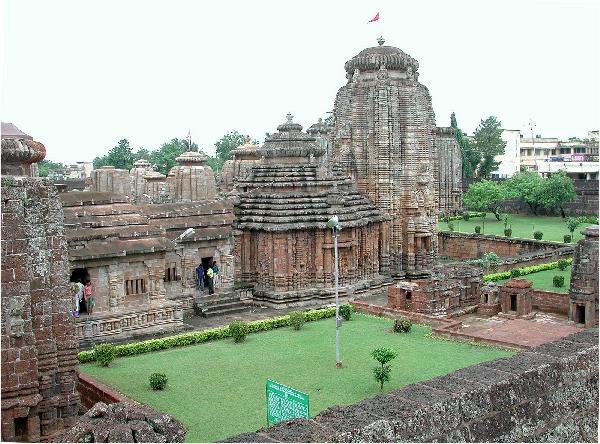
Puri
Puri is a city in Odisha state that is popular for Jagannath Temple. That’s the reason people come here as it is one of the temples for pilgrimage during Char Dham Yatra. Jagannath Temple was plundered by Hindu and Muslim rulers 18 times to rob the treasure of the temple. Besides the Jagannath temple, many other temples are also there which the tourists can visit.
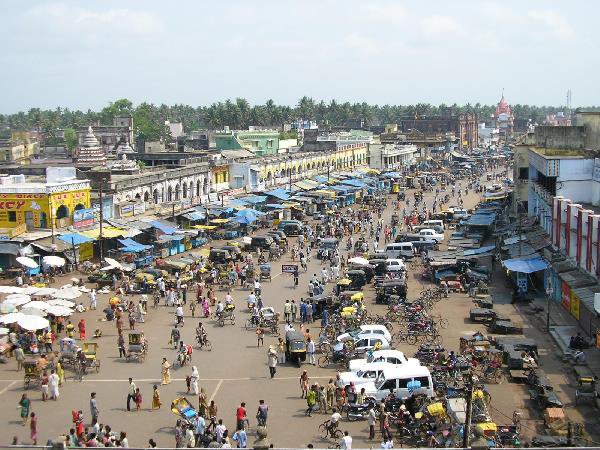
Visiting Hours
The temple is opened for the public from 5:00am in the morning to 12:00 midnight. The temple is closed from 1:00pm to 4:00pm as a long break is given. There are many rituals performed in the temple which have different timings.
Tickets
There is no entry fees and people can visit the temple any time during the visiting hours. As many festivals are celebrated here, people can participate in them without paying any fees.
Best time to visit
Jagannath Temple can be visited during the period of November to February as the climate is very pleasant. But this is the peak season and so the city is very crowded. In order to visit the place when the city is less crowded, people can come in the month of June or July.
Where to Stay?
There are around 239 hotels in Puri where people can enjoy their stay. The hotels range from cheap hotels to expensive five-star hotels. Some of the hotels of the city are as follows −
Five-Star Hotels
Pramod Convention & Beach Resort located at Ct Road
Mayfair Waves located at Chakratirth Road
Four-Star Hotels
Balaji International located at New Marine Drive Road
Toshali Sands located at Konark Marine Drive
The Hans Coco Palms located at Swargdwar
The Chariot Resort and Spa located at Baliapanda
Blue Lily Beach Resort located at Baliapanda
Three-Star Hotels
Hotel Pushpa located at Sea Beach
Nayak Beach Resort located at Chakratirth Road
Hotel Petal Regency located at Swargadwar
Jamindar’s Palace located at Chakratirth Road
Hotel Niladri located at New Marine Drive Road
Budget or Two-Star Hotels
Hotel New Rockbay located at Ct Road
Reba Beach Resort located at Gopal Bailav Road
Hotel Golden Dust located at New Marine Drive Road
Hotel Mayur located at Swargadwar
Gold Coast beach resort located at New Marine Drive Road
Cheap Hotels or One-Star Hotels
Hotel Mangal Chandi located at Baliapanda
Hotel Maa Kamakhya located at Gopal Bailav Road
Sai Resort located at Gopal Bailav Road
Chandan Lodge located at Station Road
Hotel Sapphire Inn located at Station Road
Jagannath Temple - History
Jagannath Temple under Ganga Dynasty
Jagannath Temple was constructed by King Chodaganga. The king started the construction and Jaga mohan or the assembly hall and Vimana or chariot of the temple were constructed during his reign. Later Anangabhima Deva completed the construction of the temple in 1174AD.
Legend Regarding Jagannath Temple
A legend says that Indradyumna was a king who worshipped Lord Vishnu very much. Once the king was informed that Lord Vishnu has come in the form of Nila Madhava so the king sent a priest named Vidyapati to search for him. While travelling, Vidyapati reached a place where Sabaras were residing. Vishvavasu was the local chief who invited Vidyapati to live with him.
Vishvavasu had a daughter named Lalita and Vidyapati married her after sometime. Vidyapati noticed that when his father-in-law returns, his body had a good smell of sandalwood, camphor, and musk. On asking his wife, she told him about the worship of Nila Madhava by her father. Vidyapati asked his father-in-law to take him to Nila Madhava. Visvavasu blindfolded him and took him to the cave. Vidyapati took with him seeds of mustard which he dropped on the way so as to remember the route to the cave.
Vidyapati informed the king so he came to the place but, to his disappointment, the deity disappeared. In order to see the deity, he observed fast unto death on Mount Neela. Once he heard a voice saying that he will see the deity so he sacrificed a horse and built a temple and Narada installed the idol of Sri Narsimha in the temple.
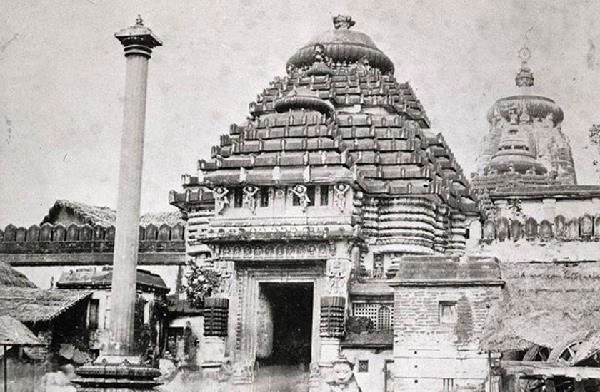
One night he slept and saw Lord Jagannath in his dream. He also heard a voice telling him about a fragrant tree and ordered him to make idols from it. So the king made the idols of Lord Jagannath, Balabhadra, and Subhadra. Along with it, he also made the Sudarshan Chakra.
Then the king prayed to Lord Brahma to visit the temple and the deities. Lord Brahma was very pleased when he saw the temple asked about a desire which he (Lord Brahma) can fulfil. The king asked that there shall be no issues in his life and he should be the last one from his family. He also asked that if anybody is left in his family, then he should work for the temple and not the society.
Invasions on the Temple
The temple was invaded by many rulers and the count goes to eighteen. The temple was plundered and looted because of enormous wealth present in it. Due to these attacks, the idols of Lord Jagannath, Balabhadra, and Subhadra were transferred to various places in order to save them.
First Invasion − It was done by Raktavahu in the 9th century.
Second Invasion − It was done by Illias Shah who was the Sultan of Bengal.
Third Invasion − It was done by Feroze Shah Tughlaq in 1360.
Fourth Invasion − It was done by Ismail Ghazi who was the commander of Allauddin Hussain Shah, Sultan of Bengal. The invasion was done in 1509.
Fifth Invasion − It was done by Kalapahara in 1568AD.
Sixth Invasion − It was done by Suleman and Osman. Suleman was the son of Kuthu Shah whereas Osman was the son of Isha, the ruler of Odisha.
Seventh Invasion − It was done by Mirza Khurrum, the commander of Islam Khan. Islam Khan was the Nawab of Bengal. The invasion was done in 1601AD.
Eighth Invasion − It was done by Hasim Khan in 1608AD. Hasim Khan was the Subedar of Odisha.
Ninth Invasion − It was done by Kesodasmaru who was a jagirdar and a Hindu Rajput.
Tenth Invasion − It was done by Kalyan Malla, son of Raja Todar Mall. It was done in 1611AD.
Eleventh Invasion − It was also done by Kalyan Malla in 1612.
Twelfth Invasion − It was done by Mukarram Khan in 1617AD.
Thirteenth Invasion − It was done by Mirza Ahmad Beg who was the nephew of Nurjahan, wife of Jahangir.
Fourteenth Invasion − It was done by Amir Mutaquad Khan in 1641AD.
Fifteenth Invasion − It was done by Amir Fateh Khan in 1647AD.
Sixteenth Invasion − It was done by Ekram Khan, the Nawab of Odisha. The invasion was launched in 1699.
Seventeenth Invasion − It was done by Muhammad Taqi Khan in 1731.
Eighteenth Invasion − It was done by the followers of Alekh religion in 1881.
Jagannath Temple - Architecture
Jagannath Temple is a very big temple and covers an area of 37000m2. The height of the outer wall is 6.1m. This outer wall surrounds the whole temple and is known as Meghananda Pacheri. The main portion of the temple is also surrounded by a wall known as Kurma Bheda.
The temple was built on the basis of Oriya architecture and has around 120 temples and shrines inside. The main temple has curvilinear shape with a chakra of Lord Vishnu on the top. This chakra is also known as Nila Chakra. The tower of the temple has the height of 65m.
Nila Chakra
Nila Chakra is located on the top of the temple and a different flag, each named as Patita Pavana, is hoisted on the chakra daily. The chakra has eight spokes called Navagunjaras. The chakra was made by an alloy of eight metals also known as Ashtadhatu. The circumference of the chakra is 11m and height is 3.5m.
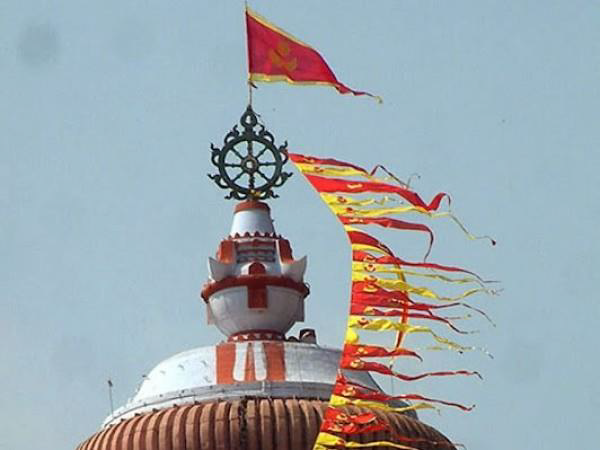
Singhdwara
There are four gates to enter the temple and one of them is Singhdwara which is a Sanskrit word which means Lion Gate. There are statues of two lions one on each side of the gate. People can enter the temple through the staircase of 22 steps which is known as Baisi Pahacha.
There is an image of Lord Jagannath which is painted on the right side of the entrance and is known as Patitapavana. This image was made for untouchables who were allowed to pray to the image of the lord from outside but cannot enter the temple.
Arun Stambha
Arun Stambh is situated in front of the Singdwara. The pillar is sixteen-sided and is monolithic. Idol of Arun can be found here who drives the chariot of Sun god. Arun Stambh was previously located at Konark temple but was brought here by Guru Brahamachari Gosain.
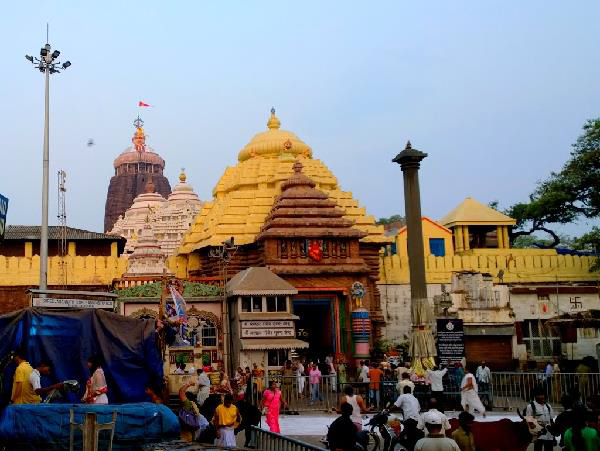
Hathidwara, Vyaghradwara, and Ashwadwara
Hathidwara, Vyaghradwara, and Ashwadwara are the three other entrances from where people can enter the temple. Hathidwara is also known as elephant gate, Vyaghradwara as tiger gate, and Ashwadwara as horse gate. The gates are named so as they are guarded by elephant, tiger, and horse respectively.
Vimala Temple
There are many minor temples in the precincts of Jagannath Temple and Vimala temple is one of them. Hindu mythology says that the feet of Goddess Sati has fallen on the spot where the temple is constructed. The food offered to Lord Jagannath is also offered to goddess Vimala then it is called Mahaprasad.
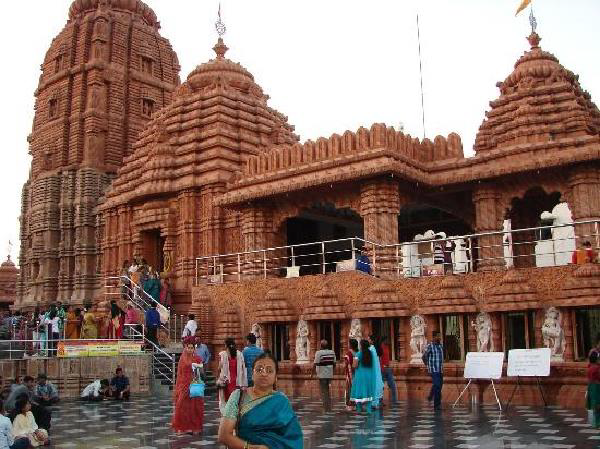
Mahalaxmi Temple
Many rituals are performed in Jagannath temple and the Mahalaxmi Temple plays an important role because preparation of the food to be offered to Lord Jagannath is supervised by Mahalaxmi. The food is known as Naivedya.
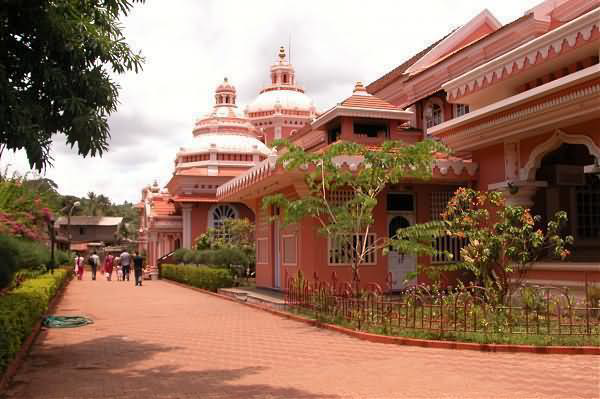
Mukti Mandapa
Mukti Mandapa is a platform made with granite and its height is five feet. The square-shaped mandapa covers an area of 900 square feet. The roof of the mandapa is supported by twelve pillars out of which four are built in the middle. The roof is 13 feet high while the height of each pillar is 8 feet. Idols of many gods and goddesses have been installed here.
Dola Mandapa
Dola Mandapa is used to make a swing on which idol of Dologobinda is placed. The swing is made during the annual Dol yatra. The mandapa is carved by using Torana and it is the same arch on which the swing is hanged.
Jagannath Temple - Festivals
Each year many festivals are celebrated in the temple and most important of them is the Rath Yatra in which the three main deities of the temple are carried to Gundicha Temple on three separate chariots. Some of the festivals celebrated in the temple are as follows −
Chandan Yatra
Chandan Yatra is the longest festival celebrated in the temple as it takes 42 days to complete the yatra. The yatra is divided into two parts namely Bahara Chandana and Bhitara Chandana and each part is celebrated for 21 days. Bahara Chanda is the first part in which the chariots are built that will take the three deities during Rath Yatra.
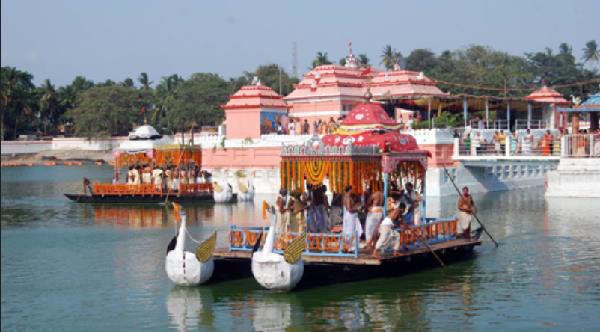
In these 21 days, the idols of Lord Jagannath, Balabhadra, and Subhadra along with five Shiva Lingas are taken to the Narendra Tirtha tank. The deities are put into the boats and they swim in the tank. Bhitara Chanda is the phase carried for the last 21 days in which the rituals are carried inside the temple.
Snana Yatra
Snana Yatra is celebrated on the full moon day of the Jyeshtha month as this is the birthday of Lord Jagannath. On this day, Lord Jagannath, Balabhadra, Subhadra, Madamohan, and Sudarshan are taken to Snana Bedi in a procession and bathed while performing different rituals.
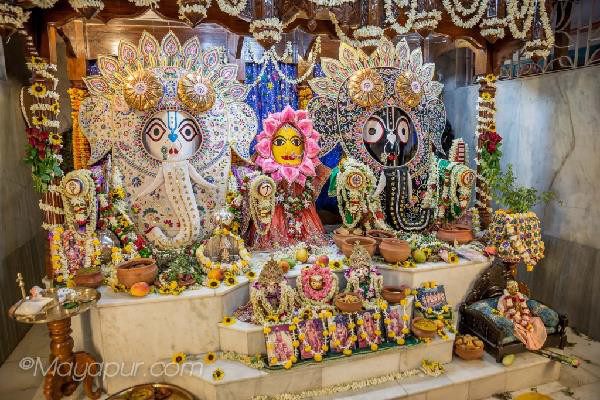
These rituals are performed on the basis of a description made in the Skanda Purana which states that the rituals were arranged by King Indradyumna when the three deities were first installed. The devotees believe that on visiting the deities on this day clean all their sins.
Anavasara
Anavasara or Ansara is celebrated after the snana yatra in which the deities are taken to Anavasara Ghar where they rest for 15 days. In these days, the devotees can go to Brahmagiri to see Alernath which a four handed deity and a form of Lord Vishnu. These 15 days are the resting period of main deities and devotees are not allowed to see them. Cooked food is also not offered to the deities.
Rath Yatra
Rath Yatra of Puri is very famous and is conducted either in the month of June or July. In this yatra, Lord Jagannath, Balabhadra, and Subhadra were brought outside and kept in three separate chariots. Then they are taken to Gundicha Temple. Every year new chariots are built having wooden wheels. These chariots are pulled by the devotees.
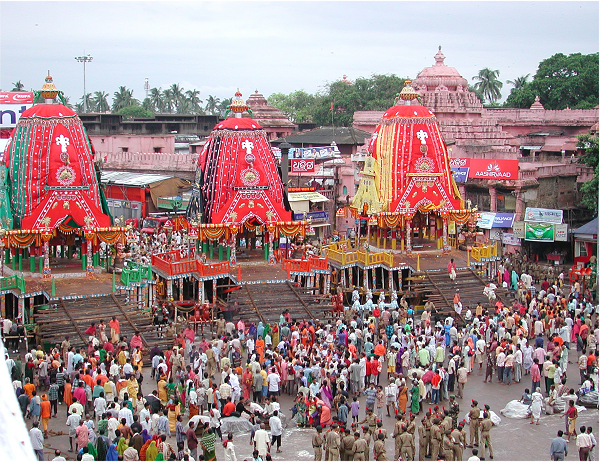
Chhera Pahara is the most important ritual of this yatra in which the Gajapati king wears the dress of a sweeper and sweeps around the chariots. The road is cleaned with a gold-handled broom and sandalwood water and powder is sprinkled. The ritual is carried on for two days. On the first day it is performed when the deities are brought to Mausi Maa Temple and secondly when they are brought to the Jagannath Temple.
Gupta Gundicha
Gupta Gundicha is celebrated 16 days before the Vijayadashmi. In this festival, idol of Madhaba and Goddess Durga tour the temple premises for first eight days. In the next eight days, they are brought to Narayani Temple and worshipped here. Then they are brought back to the Gundicha temple after eight days.
Nava Kalebara
Nava Kalevara is celebrated when the lunar month of Ashadha is followed by another month of Ashadha which happens at a difference of 8, 12, or 18 years. In this festival, the old idols are buried and new idols are installed. Large number of devotees attend this festival.
Jagannath Temple - How to Reach?
Puri is a small district and has no airport. The nearest airport is Bhubaneshwar which is around 60km away from Puri. But the city is well-connected to various cities through road and rail transport.
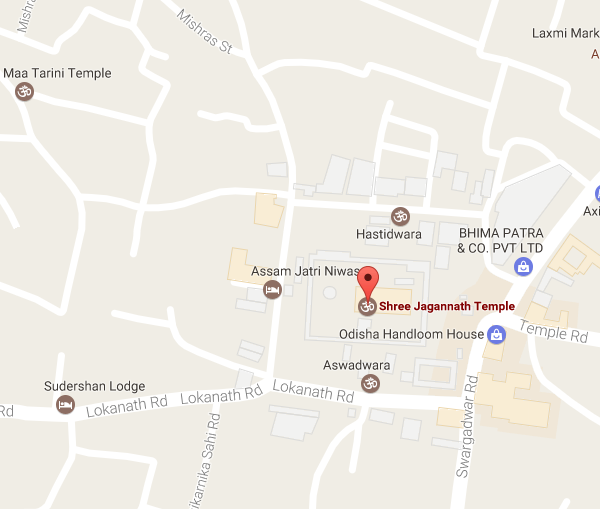
The approximate distance of some of the cities from Puri is as follows −
Puri to Bhubaneshwar
By rail – 63km
By road – 59km
Puri to Vishakhapatnam
By rail – 469km
By road – 444km
Puri to Kolkata
By rail – 502km
By road – 518km
Puri to Cuttack
By rail – 91km
By road – 81km
Puri to Rajahmundry
By rail – 669km
By road – 625km
Puri to Vizinagram
By rail – 408km
By road – 396km
By Air
There is no airport is Puri but Bhubaneshwar airport is around 60km away from Puri. Bhubaneshwar Airport is also known as Biju Patnaik International Airport and is the only international airport in Odisha. The airport has two terminals where Terminal 1 is for domestic flights and Terminal 2 is for international flights.
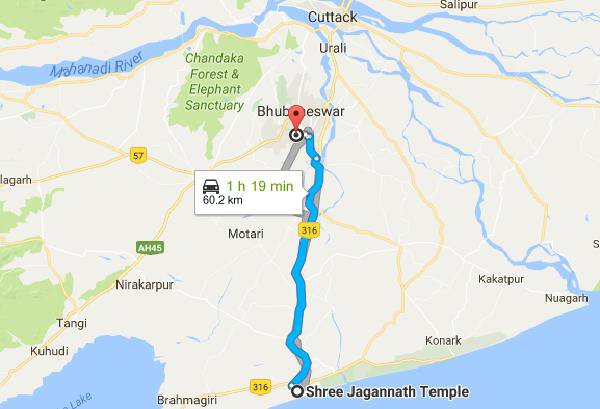
By Train
Puri is well-connected to various parts of India through the rail transport. Many trains run from Puri to Ahmedabad, Kolkata, New Delhi, and other places. Puri is a terminal railway station. Shatabdi, Garib Rath superfast and fast mail and express trains run from here.
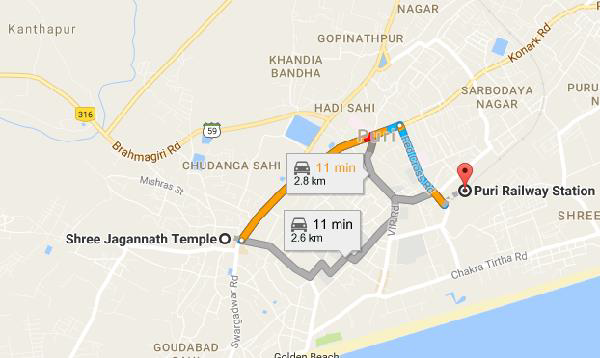
By Road
Bus stand of Puri is near the Gundicha temple from where tourists can get direct buses to Kolkata and Vishakhapatnam. People can also catch buses to Bhubaneshwar and Cuttack Buses from here also run to the nearby Konark temple.
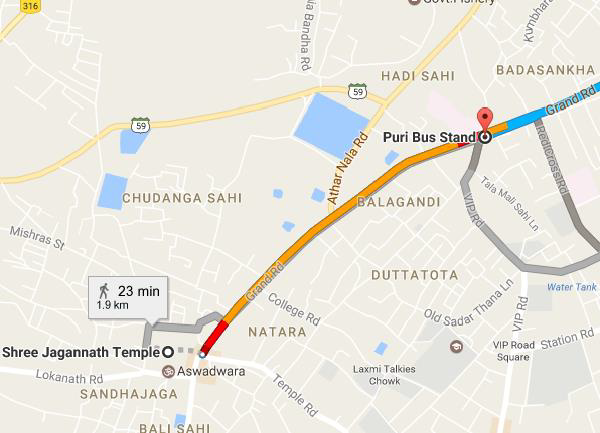
Local Transport
Tourists can move around in the city through cycle and auto rickshaws though auto-rickshaws are very few. Besides these, people can hire, bikes, mopeds, and cycles in order to visit the city.
Jagannath Temple - Nearby Places
There are many temples and other places that can be visited in as well as outside Puri. People can go to these places through local transport. These places are nearby Jagannath Temple. Some of them are as follows −
Konark Sun Temple
Konark Sun Temple was built in 13th century most probably by Narnimhadeva I who belonged to Ganga dynasty. The shape of the temple is like a huge chariot with wheels, pillars and walls. The temple was built on the banks of river Chandrabhaga.
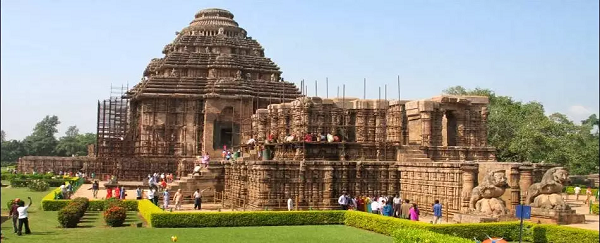
There are twelve pairs of stone wheels and the width of each of them is 3m. There are seven horses which are shown as if they are pulling the chariot. The temple is 30km away from Jagannath Temple.
Suna Goswami Math
Suna Goswami Math is one of the popular maths of Orissa and India where many festivals are celebrated. Chandan Yatra, Snana Purnima, and Agni Utsava are some of them. During the festival of Chandan Yatra, ornaments are distributed among the devotees. These ornaments are made up of flowers. Panti bhoga is made on the occasion of Agni Utsava.
Atharnala Bridge
Atharnala bridge is a popular tourist attraction which was built in 13th century to develop transport system. The bridge was used to cross the Mandupur stream. The dimensions of the bridge is 85m x 11m. Now also people come here and offer prayer.
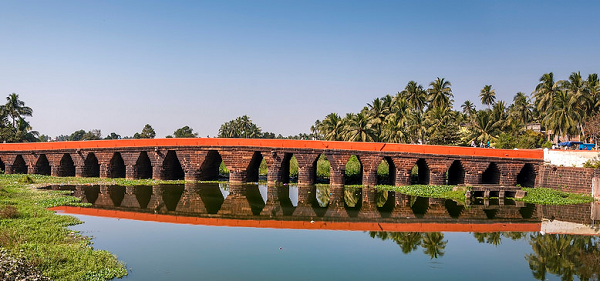
Puri Beach
Puri beach is considered as one of the beautiful beaches of India. It is a good picnic spot as many people come to the beach daily for their enjoyment. The beach is situated in Bay of Bengal and is popular for sunrise and sunset. Puri festival is organized in the month of November and is the best time to visit the beach.
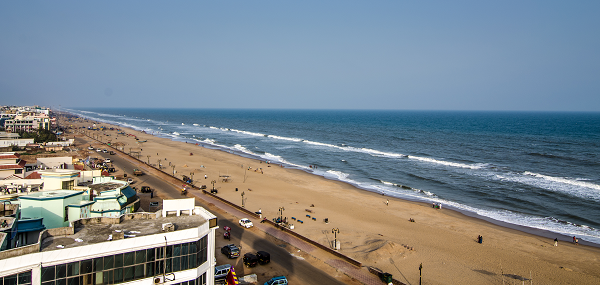
Gundicha Ghar Temple
Gundicha Ghar Temple is very popular temple of Puri as it is compared with the Jagannath Temple. According to Hindu Mythology, the temple was a place where Gundicha, aunt of Lord Krishna, used to live and he comes and lives here for nine days during Rath Yatra. Idols of Lord Jagannath, Subhadra, and Balabhadra is also brought here during Rath Yatra.
